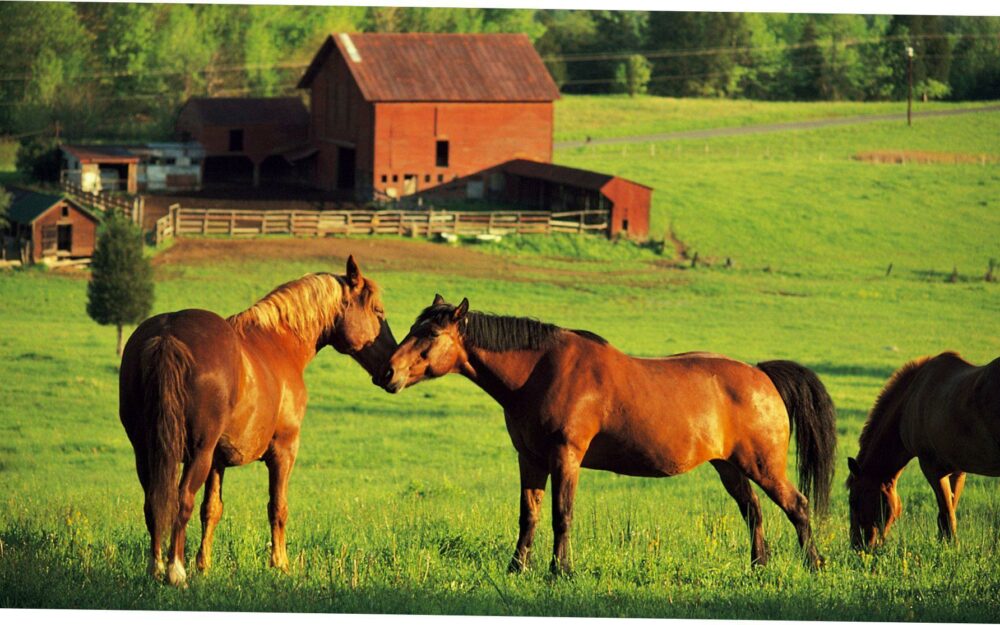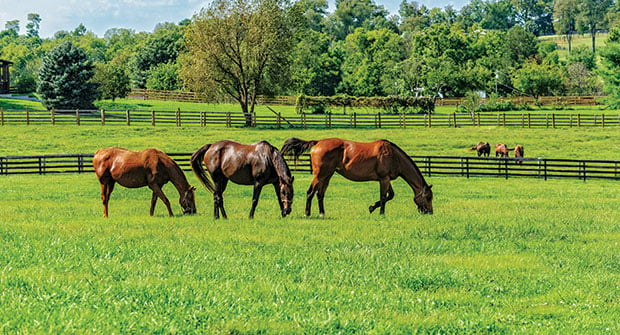
Buying a horse farm is a dream for many equestrian enthusiasts. The idea of waking up to the sound of horses, having wide open spaces, and enjoying a rural lifestyle is undeniably appealing. However, purchasing a horse farm is a significant investment and requires careful consideration. A horse property is unlike any other type of real estate.
Location is very important to the success of the business. When looking at properties, be sure it is in close proximity to local vets, feed, tack stores, and other equestrian facilities. Having easy access to enter and maneuver around the property for vets, food suppliers and other services is crucial. All structures, arenas, and pastures should have a clear path for easy passage in case of an emergency.
To be successful, an Equestrian Center must be accessible to its target market, usually located near to urban or suburban areas. The best strategy is to make it easy for clients to bring their horses to your facility. Furthermore, the adequacy of the land must be assessed not only for immediate needs but also for future expansion possibilities, such as additional stables, arenas, or trails.
Size Matters
There are many factors to take into account when calculating how much land is needed for an equine business. The traditional approach of one acre per horse is not an adequate way to determine the total acreage needed. It is recommended to include local zoning ordinances, federal storm water regulations, and the land’s carrying capacity in your search. A land’s carrying capacity includes pasture management, pasture rotation, manure management, stream and pond buffering, and other best-management practices that keep the environment healthy. There should be a large portion of level land that is open for riding on and off the property.
Healthy Pastures = Happy Horses
The next step is determining whether there are enough pastures so that you can manage them according to the rotational grazing system, checking the soils, and examining natural habitat.
In addition to pastures there should be paddocks outside of the stalls, typically 20 by 60 feet. Each paddock should have a shaded area to protect the horse on hot days. Paddocks’ primary purpose is to separate horses without having to keep them cooped up in a stall. You may want to isolate a horse for many reasons, such as breeding purposes, recovering from an injury, or restricting its diet.
The soil must be tested throughout the property to insure the growth of healthy plants and grasses. Certain hydric soils do not drain well and create mud issues hindering plant growth. Beware of land that hasn’t been cleared, the soil quality may be problematic. Information about soil testing can be found through the US Department of Agriculture’s online Web Soil Survey (WSS). (https://websoilsurvey.sc.egov.usda.gov/App/HomePage.htm).
The best soils are sandy, loamy, organic soils. Loamy soils are a mixture of clay, sand, and silt. In the right proportions, loam is the ideal medium for growing quality grasses. At least twice a year allow your pastures to “rest” for six weeks to avoid over grazing and eroding the top soil.
And finally, examine the natural habitat to look for toxic plants or weeds around (such as Stinkwort or Ragwort) as these may harm your horses if they eat them accidentally. You can contact a local agriculture extension agent to help identify unfamiliar plants and weeds growing on the land.
Inspect all Structures
Walk the perimeter to examine fences to insure there are no unsecured areas and the materials used are safe for horses. Look out for fences that have been obviously neglected and take note of any broken boards or nails jutting out. Barbed wire should never be used because it can do serious harm to the horses’ skin. Fences should be a height tall enough to keep horses in and in a state of good repair. The best fencing includes wood board, PVC board, and high tensile wire, to name a few.
In addition to the primary residence inspection, a farm inspection is needed for barns, stalls, arenas and any other structures on the land. Have the ceiling or truss height for jumpers measured for accuracy in indoor arenas and check if the proper lighting has been installed. Make sure the roof of each building gets thoroughly inspected too.
This all may seem overwhelming and complicated but finding that perfect horse farm doesn’t have to be. There are several well maintained equestrian estates on the market that have been built and designed for someone looking for a cash flowing business that has all the bells and whistles and is ready to go!
IMAGINE …
Owning a beautiful 30 acre equine facility that checks all the above boxes! Well do we know of just the place. This pristine equestrian property with state of the art amenities is not just a horse boarding business it also focuses on the hunter/jumper and equitation disciples for competition. In addition to their horse boarding, which is a lucrative business, they provide training, lessons for all ages/ability and showing.
There are three luxury barns with 29 matted 12 x 12 stalls with fans, automated water system, an automated fly spray system and even a laundry! The horses can enjoy a TheraPlate, bemer to counter the effects of chronic inflammation conditions and speed healing any injuries. Outside of each stall are paddocks with shade trees and run in shelters to ensure protection from the sun.
There are 11 pastures on the property that ensures rotation and eliminates over grazing.
Ride 365 days a year with the 180′ x 70′ lighted indoor arena with installed timed sprinklers. A 200′ x 300′ n outdoor arena with premium footing gives unyielding support for powerful takeoffs and cushion for agile turns and unexpected landings. Ride into the night with state of the art lighting; keep cool during the day with sprinklers and shade trees. Horse training is a breeze in the 80′ round pen. Prepare for competitions on the derby hill with 3 permanent jumps to provide a versatile training ground for horses and riders. Enjoy a leisure ride on the bridle paths throughout this beautiful property.
But it’s not JUST about the horses. The primary residence, a 5 bedroom with 3 full baths and 2 half baths was custom built in 2015 and is stunning. The home features an open floor plan and overlooks a private lake. There is a salt water pool and hot tub with a lounge area that is great for entertaining. Inside the finishing touches are elegant, comfortable and spacious. A finished basement makes a great place for guests or a family room.
There is also a second home on the property that has been recently renovated. It is currently being used as housing for the employees who work on the farm.
Does this sound too good to be true? The price for this turn key luxurious Equestrian Estate will blow you away. If you are you looking for an Equestrian Estate in Georgia just like this and curious to find out more, let’s connect 404-556-1733

